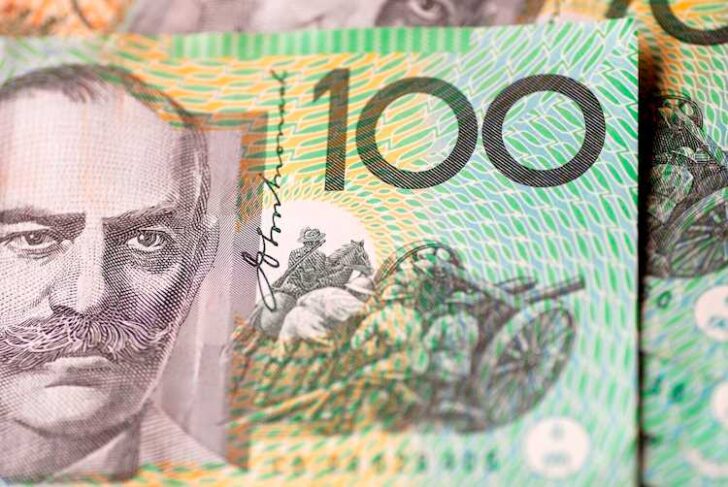- The Australian Dollar rises as positive market sentiment favors the risk-sensitive currencies.
- The Australian Dollar cheered the hawkish sentiment surrounding the RBA despite the weaker Aussie Trade Balance and Building Permits.
- The US Dollar faced a challenge as Fed Chair Powell dismissed the likelihood of a further rate hike.
The Australian Dollar (AUD) extends its gains on Thursday despite the weaker-than-expected Trade Balance and Building Permits data released by the Australian Bureau of Statistics. The AUD/USD pair receives support from the prevailing positive market sentiment after dovish remarks from the Federal Reserve Chairman Jerome Powell on Wednesday.
The Australian Dollar advances due to the hawkish sentiment surrounding the Reserve Bank of Australia’s (RBA) maintaining higher interest rates in 2024. The higher-than-expected domestic inflation data released last week has raised expectations that the RBA may delay interest rate cuts.
The US Dollar Index (DXY), which gauges the performance of the US Dollar (USD) against six major currencies, remains under pressure following the dovish remarks from Federal Reserve Chairman Jerome Powell after the interest rate decision on Wednesday. Powell dismissed the likelihood of a further rate hike, contributing to pressure for the US Dollar (USD). As expected, the US Federal Reserve (Fed) decided to maintain interest rates at 5.25%-5.50% in May’s meeting.
Traders are likely awaiting weekly Initial Jobless Claims, Nonfarm Productivity, and Factory Orders from the United States (US) on Thursday. These releases will likely provide further insights into the state of the United States (US) economy.
Daily Digest Market Movers: Australian Dollar appreciates due to improved risk appetite
- Australia’s Trade Balance (MoM) posted a surplus of 5,024 million in April, against the market anticipation of an increase to 7,370 million from the previous 7,370 million. Additionally, Australian Building Permits rose by 1.9%, falling short of the expected 3.0% in March. The February’s reading was -1.9%.
- The ASX 200 Index saw a modest increase on Thursday following the uptick in heavyweight financial firms, recovering some losses recorded Wednesday. This could be attributed to the positive market sentiment after Fed Chair Jerome Powell dismissed the chances of any further rate hike during the Federal Open Market Committee (FOMC) conference on Wednesday.
- Federal Reserve Chairman Jerome Powell highlighted that progress on inflation has recently stalled, suggesting that it would take more time than previously anticipated before the Fed could confidently expect inflation to approach its 2% target. Powell mentioned that if robust hiring persisted and inflation remained stagnant, it would justify delaying rate cuts.
- The ADP US Employment Change reported that private businesses added 192,000 workers to their payrolls in April, surpassing the expected increase of 175,000 and 208,000 prior.
- The ISM US Manufacturing PMI fell to 49.2 in April from March’s 50.3, against the market expectations of a stall. The data indicated a contraction in the US manufacturing sector, failing to sustain the momentum observed in the previous month, which marked the first expansion in 16 months.
- According to the Financial Review, ANZ predicts the Reserve Bank of Australia will start reducing interest rates in November, spurred by last week’s inflation data surpassing expectations. Likewise, Commonwealth Bank, Australia’s largest mortgage lender, has revised its forecast for the RBA’s first interest rate cut timing, now projecting a single cut in November.
- According to the CME FedWatch Tool, the likelihood of the Federal Reserve maintaining interest rates at their current level during the June meeting has risen to 91.0%, climbing from 83.5% a week ago.
Technical Analysis: Australian Dollar moves above 0.6500 back into the triangle
The Australian Dollar trades around 0.6530 on Thursday. The pair has re-entered the symmetrical triangle pattern. Additionally, the 14-day Relative Strength Index (RSI) is above the 50-level, indicating a bullish bias.
The AUD/USD pair might challenge the upper boundary, situated around the level of 0.6580, followed by the psychological level of 0.6600. A breakthrough above this level could lead the pair to explore the region around March’s high of 0.6667.
On the downside, the AUD/USD pair could potentially move toward the lower boundary of the symmetrical triangle around the nine-day Exponential Moving Average (EMA) at 0.6509. A break below the latter could exert pressure on the pair to test the rebound support at the 0.6480 level.


Leave a Reply